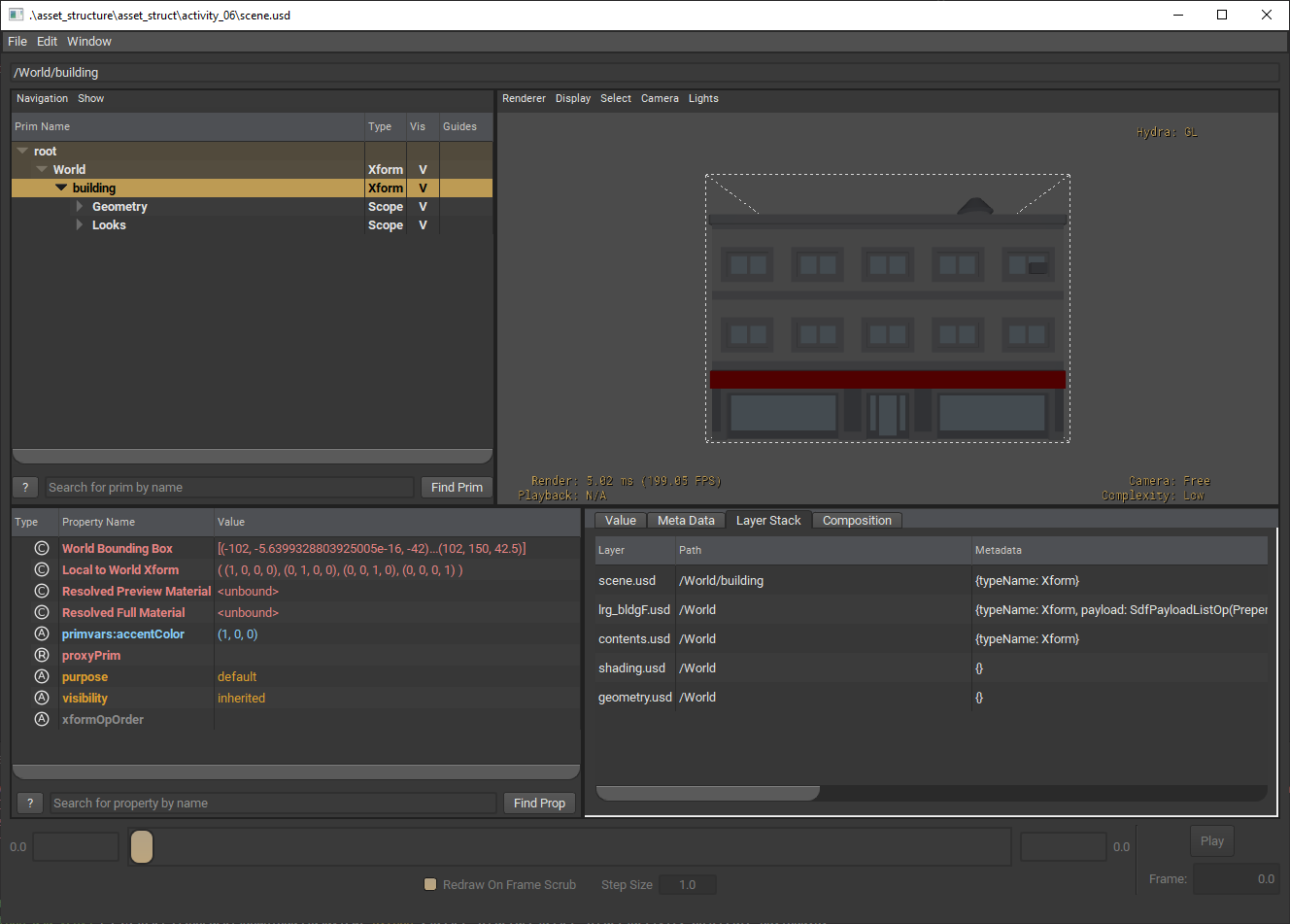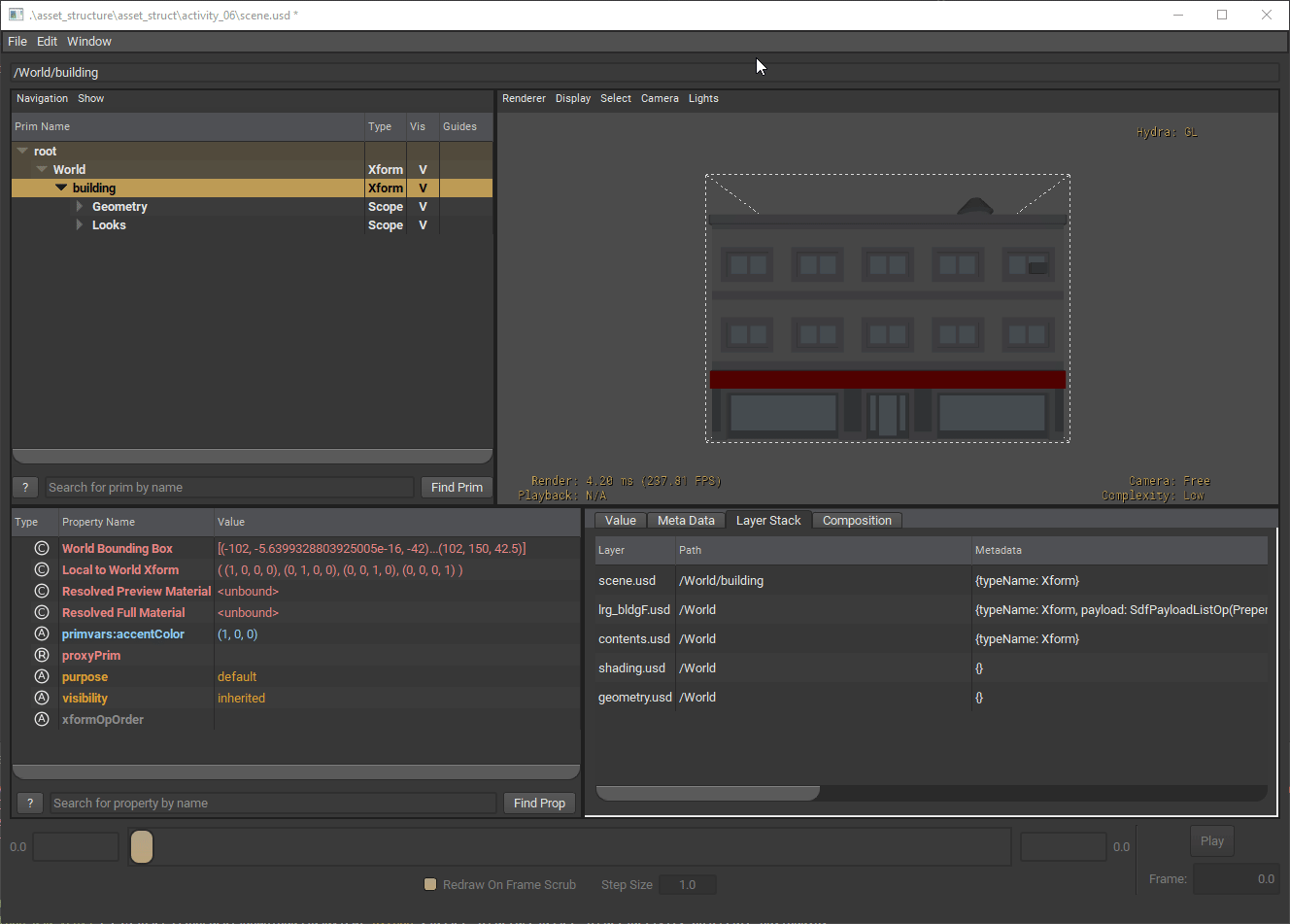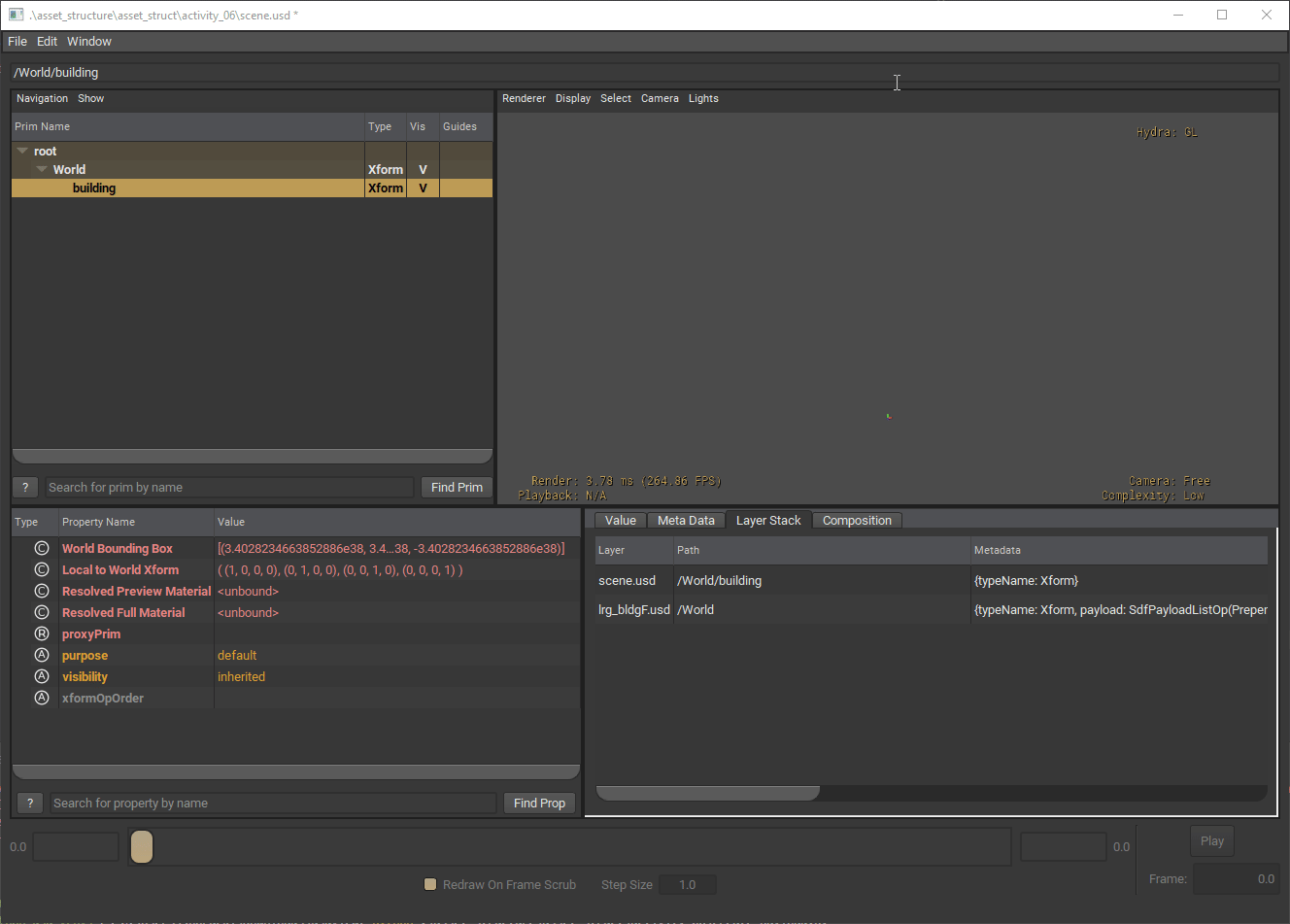Exercise: Reference/Payload Pattern#
In this exercise, we will add a reference/payload pattern to our asset. First, we’ll export the asset root layer (lrg_bldF.usd) and rename it to contents.usd to serve as our payload. Next, we’ll recreate the asset root layer, omitting the sublayers that have been moved behind the payload. This new root layer will also include the payload arc.
In Visual Studio Code, open the following file:
asset_structure/exercise_06/create_payload.pyLet’s add code to create the payload. Add the following code into the designated PART 1 section:
1stage: Usd.Stage = Usd.Stage.Open(str(working_dir / "lrg_bldgF.usd"))
2# "Save As..." the lrg_bldgF.usd as contents.usd
3asset_layer: Sdf.Layer = stage.GetRootLayer()
4contents_layer_name = "contents.usd"
5asset_layer.Export(str(working_dir / contents_layer_name), args={"format": "usda"})
This is essentially performing a “Save As…” to save the asset root layer as content.usd. This will be the layer that we will payload.
Let’s make our asset root layer payload the
contents.usdlayer. Add the following code into the designated PART 2 section:
1# Create a new asset_layer in memory for now.
2stage: Usd.Stage = Usd.Stage.CreateInMemory()
3world_prim = UsdGeom.Xform.Define(stage, "/World").GetPrim()
4stage.SetDefaultPrim(world_prim)
5UsdGeom.SetStageMetersPerUnit(stage, UsdGeom.LinearUnits.centimeters)
6UsdGeom.SetStageUpAxis(stage, UsdGeom.Tokens.y)
7
8# Add contents.usd as a payload
9world_prim.GetPayloads().AddPayload(f"./{contents_layer_name}")
10stage.GetRootLayer().Export(str(working_dir / "lrg_bldgF.usd"), args={"format": "usda"})
This is creating the asset root layer from scratch, but this time we won’t add any workstream sublayers since those are handled by contents.usd now. Before saving the stage, we add the payload to the defaultPrim.
Save the file and then execute the script with the following command:
Windows:
python .\asset_structure\exercise_06\create_payload.py
Linux:
python ./asset_structure/exercise_06/create_payload.py
You will see a warning message in the console.
Warning: in _ReportErrors at line 3309 of C:\a\OpenUSD\OpenUSD\pxr\usd\usd\stage.cpp -- In </World>: Could not open asset @contents.usd@ for payload introduced by @anon:000001D317F052B0:tmp.usda@</World>. (recomposing stage on stage @anon:000001D317F052B0:tmp.usda@ <000001D31794A9E0>)
This is expected because we set a relative path for the payloaded layer, which is invalid while the stage only exists in memory. Once we save the stage to disk and reopen it, everything will compose correctly.
In Visual Studio Code, open the following file:
asset_structure/exercise_06/lrg_bldgF.usd. Note the payload arc in this layer now.Let’s see
lrg_bldgFin a stage where it is referenced. Openlrg_bldgFin usdview by running the following command the Visual Studio Code terminal.
Windows:
.\scripts\usdview.bat .\asset_structure\exercise_06\scene.usd
Linux:
./scripts/usdview.sh ./asset_structure/exercise_06/scene.usd
The “building” Xform is the root of our lrg_bldgF asset.

In usdview, right-click on the “building” prim and select “Unload”. As expected, the descendant prims of “building” have disappeared from the tree view and the building no longer appears in the viewport.

In usdview, right-click on the “building” prim and select “Load”. Note that everything loads again.
